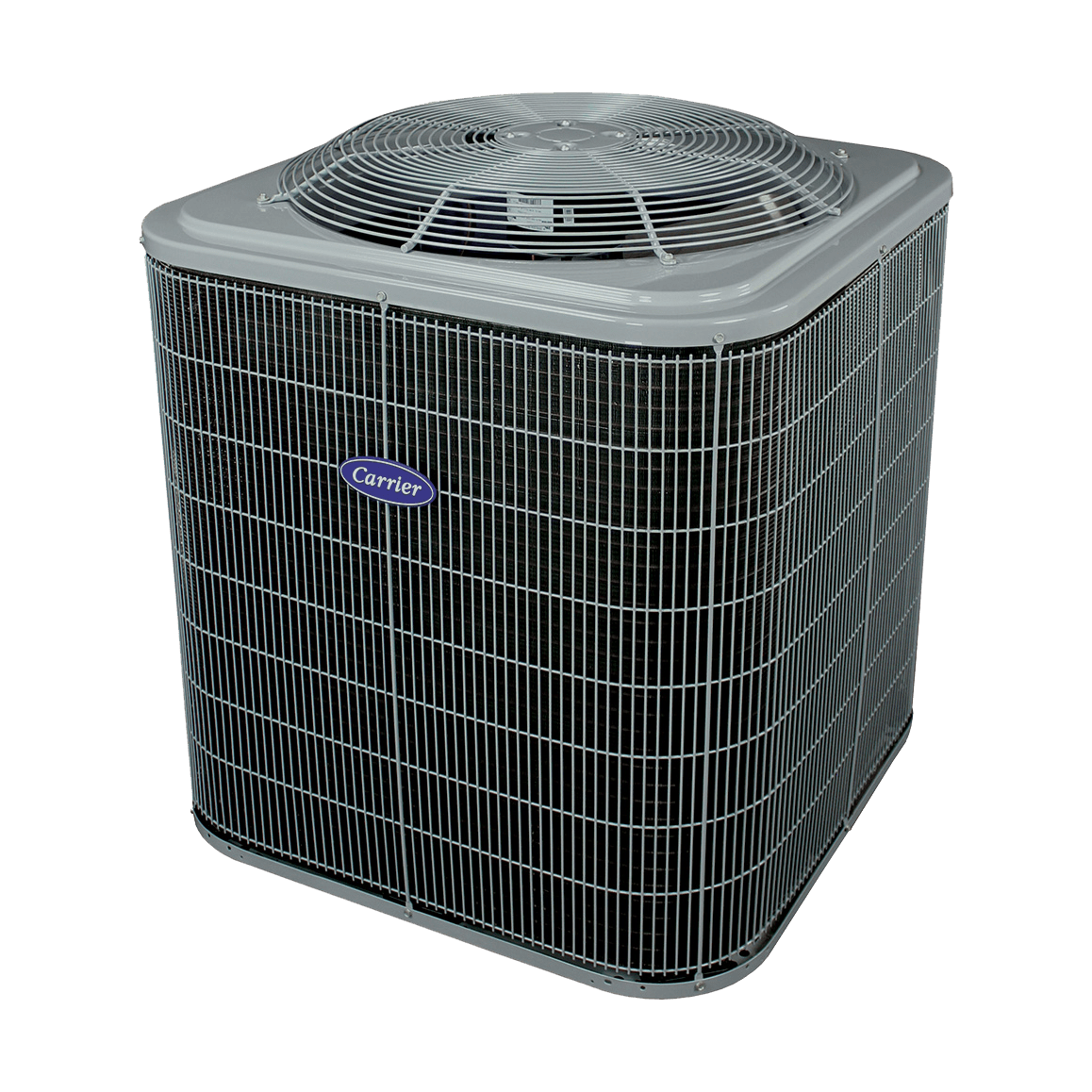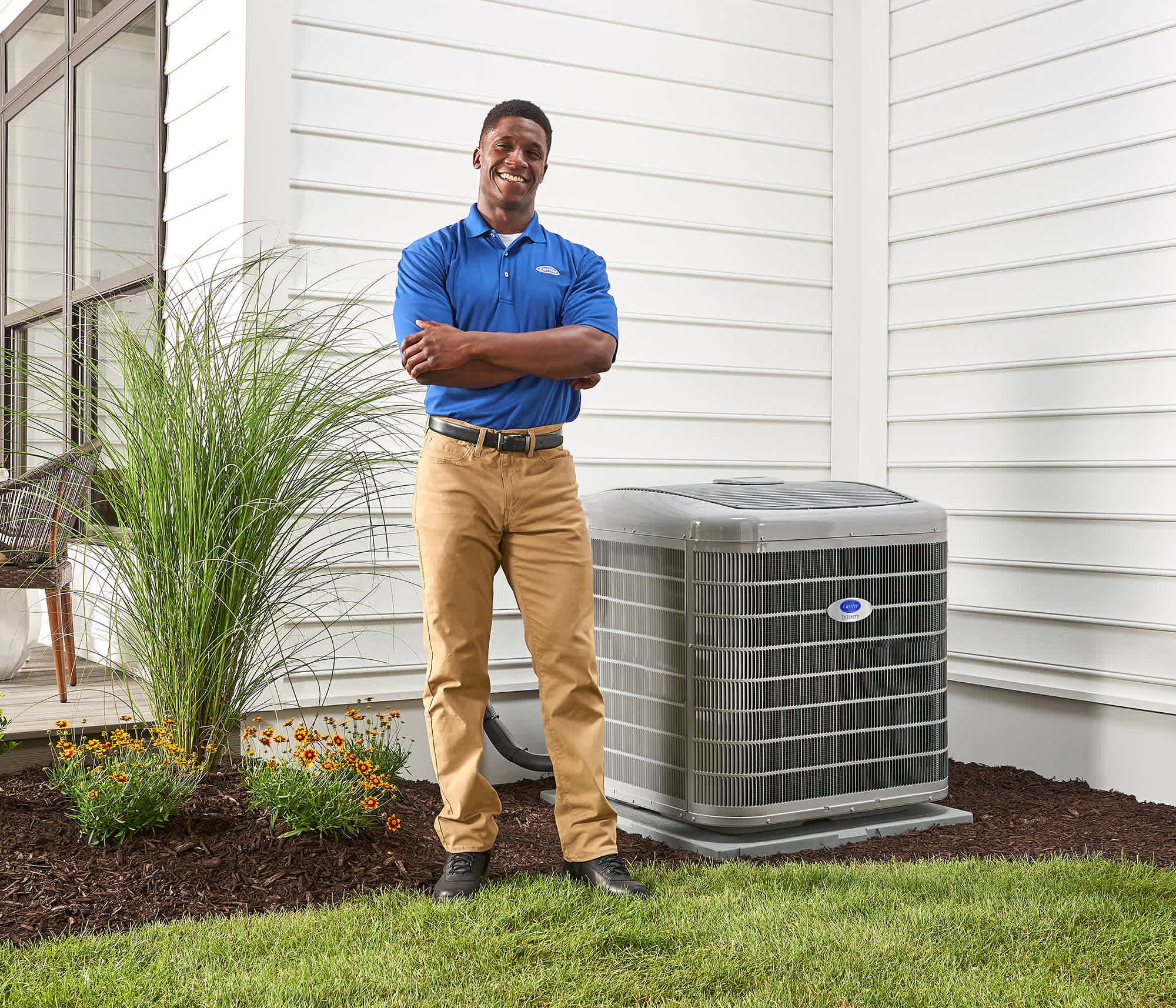Heat Pump Installation
By Travis Baugh
Installing a heat pump system requires a precise and thorough process to ensure optimal performance and energy efficiency. Here is a step-by-step guide to give you a better understanding of what to expect during heat pump installations from your local Carrier dealer.
How Does a Heat Pump Installation Work?
Things To Consider Before Installing a New Heat Pump
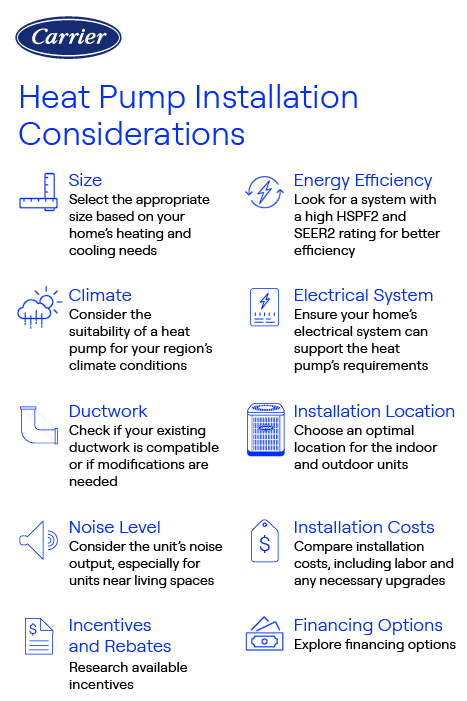
- Size and capacity: A unit that's too small or too large can lead to inefficient operation and comfort issues. Proper sizing is crucial for system performance and installation requirements.
- Energy efficiency: Look for high SEER2 and HSPF2 ratings to reduce energy bills and environmental impact. Efficient systems may also require upgraded components during installation.
- Climate: Your regional climate will determine the type of heat pump best suited for your home. Explore heat pumps for cold climates.
- Electrical system: Heat pumps may require a dedicated electrical circuit or panel upgrades, depending on your home’s current infrastructure.
- Ductwork: Existing ductwork should be assessed for leaks, sizing, and compatibility. In some cases, modifications or a ductless solution may be needed.
- Installation location: Proper placement of indoor and outdoor units affects performance, noise, and maintenance access.
- Noise level: If the unit will be installed near bedrooms or shared spaces, selecting a quieter model may be a priority.
- Installation costs: Factors like system type, labor, and necessary upgrades can influence total installation cost. Learn more about heat pump cost.
- Incentives and rebates: You may qualify for savings that help offset installation costs. Learn more about the Heat Pump Tax Credit.
- Financing options: Flexible financing plans may be available through dealers to help manage upfront expenses.
Step-by-Step Breakdown of Heat Pump Installations
1. Home Assessment & System Selection
Site Assessment
A certified HVAC contractor will visit your property to assess the suitability of the location for the heat pump installation. Factors such as available space, electrical connections, and proper ventilation will be evaluated to determine the best placement for your system.
Sizing Calculation
The HVAC contractor will calculate the appropriate size of the heat pump based on your property's heating and cooling needs. This step is crucial to ensure that the system can effectively maintain a comfortable indoor environment. Choosing the right size heat pump for your home is crucial for optimal performance and energy efficiency.
Several factors influence the correct size of a heat pump, including the square footage of your living space, insulation levels, ceiling height, and local climate. A professional HVAC technician can assess these factors and perform load calculations to determine the appropriate heat pump size for your home.
An appropriately sized heat pump operates efficiently, which can help save you money on heating and cooling bills over time. It can also help extend your heat pump's lifespan and reduce the likelihood of breakdowns or repairs.
Ductwork Inspection
If your property already has existing ductwork, the technician will inspect it for any leaks or damages. Properly sealed and insulated ducts are essential for efficient heat pump operation.
System Selection

2. Installation
Once the site assessment and sizing calculation are complete, the technician will proceed with installing the heat pump system.
Preparing the Area
Disconnecting the Old Heat Pump
Placement
Connections
Testing and Calibration
After the heat pump installation, the technician will thoroughly test the system to ensure it is functioning properly. They will check for any refrigerant leaks, verify the airflow, and calibrate the settings to match your desired temperature preferences.
Owner Education and Maintenance
Finally, the technician will provide you with a comprehensive explanation of the installed system, its features, and how to operate it efficiently. They will also offer heat pump maintenance tips to help you keep your heat pump in optimal condition for years to come.
Why Choose Carrier for Your Heat Pump Installation?
When investing in a new air source heat pump, choosing Carrier ensures exceptional quality, reliability, and expert installation for long-term comfort and efficiency.Carrier’s Reputation for Quality and Reliability
Carrier has been a leader in the HVAC industry for over a century, known for manufacturing durable and energy-efficient heating and cooling solutions. Their heat pumps are built to deliver consistent heating and cooling performance.Benefits of Choosing Carrier Heat Pump Systems
Carrier heat pumps offer advanced technology, including variable-speed compressors, smart thermostat compatibility, and high SEER2 ratings, ensuring maximum efficiency and lower heating and cooling bills. They provide year-round comfort, efficiently heating in winter and cooling in summer while maintaining optimal humidity levels.Factory Authorized Dealers
Carrier’s Factory Authorized Dealers are trained to install heat pumps with precision, ensuring proper sizing, airflow optimization, and seamless integration with existing HVAC systems. Their expertise guarantees efficient performance and long-term reliability, backed by strong warranty options.
By choosing Carrier for your heat pump installation and heat pump repairs, you get a trusted brand, high-performance systems, and expert installation, ensuring comfort and energy savings for years to come.
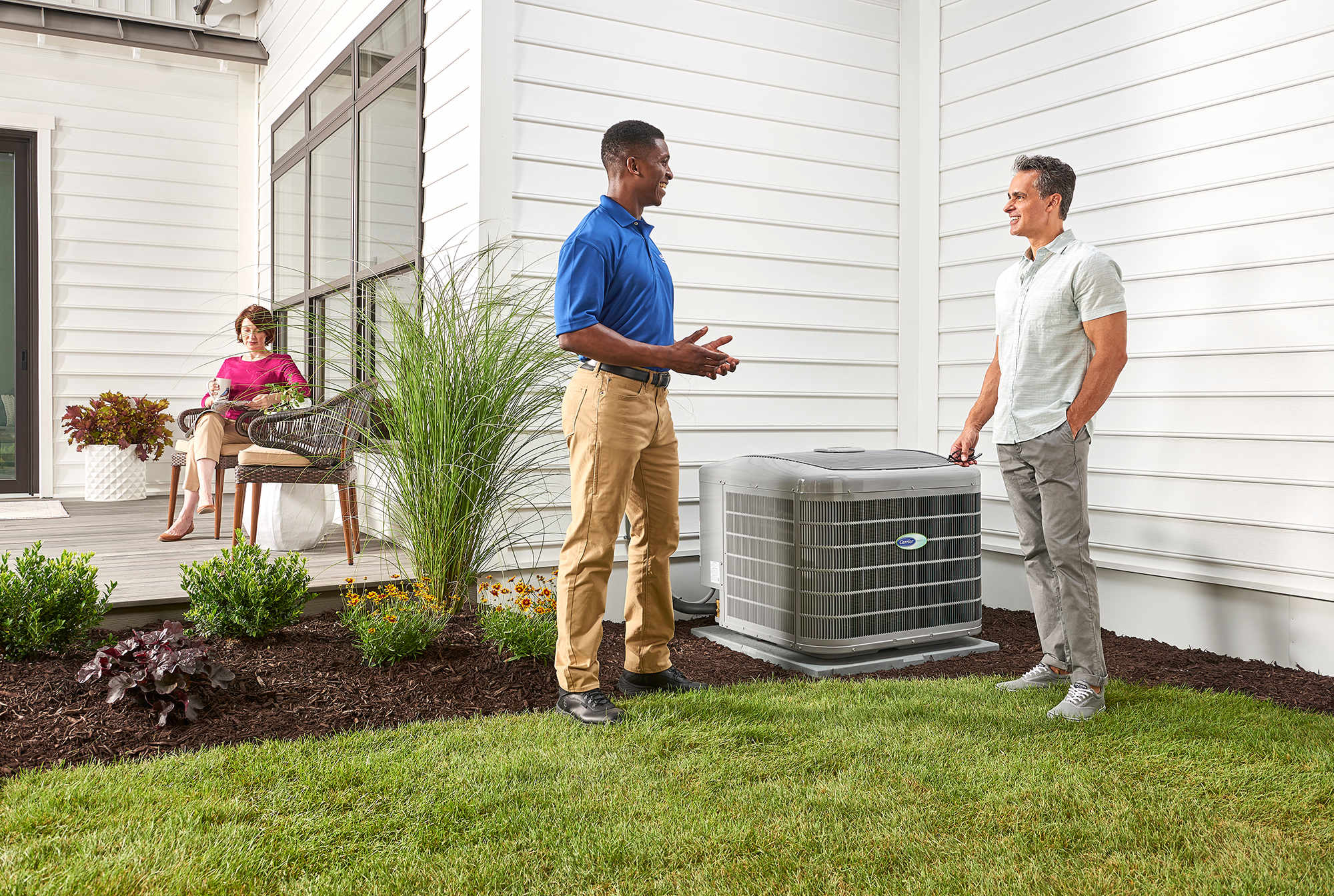
Find A Carrier Dealer For Heat Pump Installation Near Me
If you’re looking for “heat pump installation near me”, you can rely on your local Carrier dealer. Your local Carrier dealer can provide expert heat pump sizing and selection, a professional installation, and maintenance and service of your heat pump system throughout the years.
Don't think you can't install a heat pump if you live in a cold climate. Cold climate heat pumps are specifically designed to deliver efficient heating—even in freezing temperatures—making them a smart, year-round solution for northern homes.
A Carrier expert will carefully assess your home's heating needs and recommend the most efficient and effective HVAC solution for your home. They understand that every home is unique, and their goal is to ensure that you have the HVAC system tailored to your specific requirements. Check for rebates and heat pump tax credits in your area as well.
Explore Carrier Heat Pumps
Up to 18.5 SEER2 for enhanced energy savings with enhanced comfort features. Features InteliSense™ technology
Our highest efficiency and most advanced heat pump with up to 23 SEER2 for premium energy savings with extremely quiet performance and premium comfort features.
Up to 16 SEER2 for moderate energy savings with standard comfort features.
Frequently Asked Questions On Heat Pump Installation
Depending on the system type, most heat pump installations can be finished by an experienced technician in four to eight hours. A few factors that can impact how long your installation takes include:
- Type of System: Ductless systems may be faster to install than ducted systems.
- Existing Ductwork: If existing ductwork needs to be modified, it can add time to the installation.
- Weather: Weather conditions can impact the outdoor work and potentially delay the process.
If your new heat pump does not require major modifications to your current setup in regard to installation location, unit size, refrigerant lines or electrical connections, installation time may be closer to four hours. For more complex installations, expect it to take longer.
- Uneven heating or cooling throughout your home
- Frequent cycling on and off
- Strange noises or vibrations during operation
- Higher-than-expected energy bills
- Ice buildup on the outdoor unit in mild weather
- Poor airflow from vents
- Thermostat settings not matching room temperature
Learn More About Heat Pumps
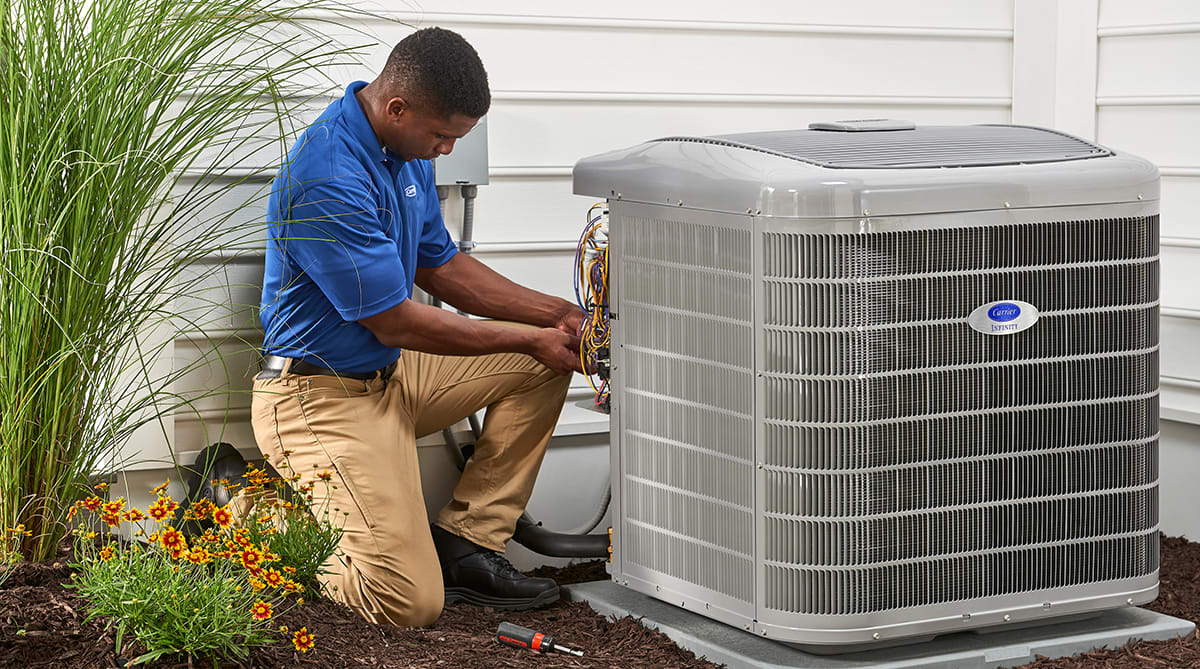
- Let's start with the basics - what is a heat pump?
- Get information about the cost of a heat pump
- Learn about heat pump efficiency and efficiency ratings
- 3 Reasons to consider a heat pump
- Heat Pumps: A Sustainable Comfort Solution
- Learn about heat pump sizing: 2-ton heat pump, 3-ton heat pump, 4-ton heat pump, 5-ton heat pump


